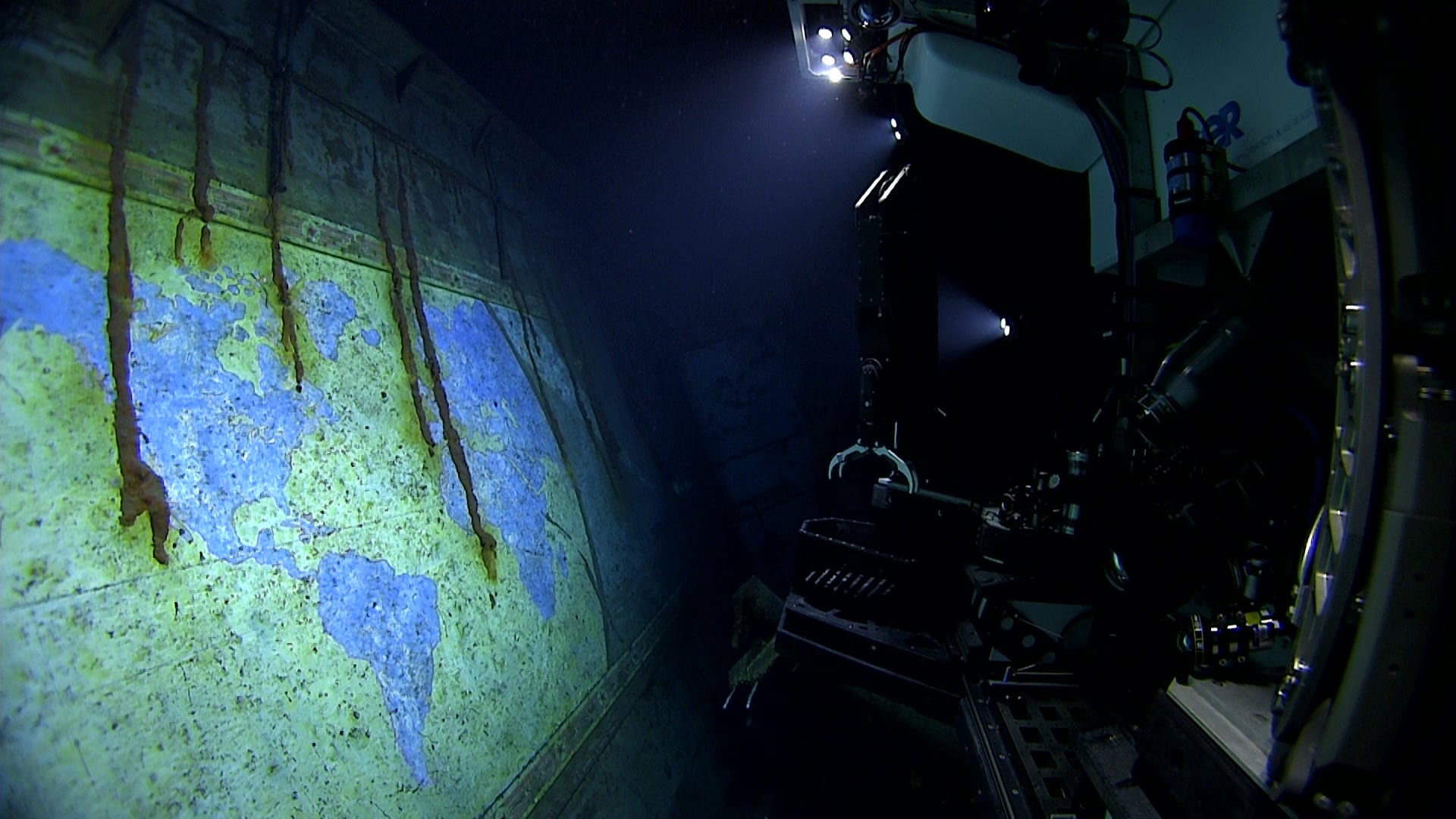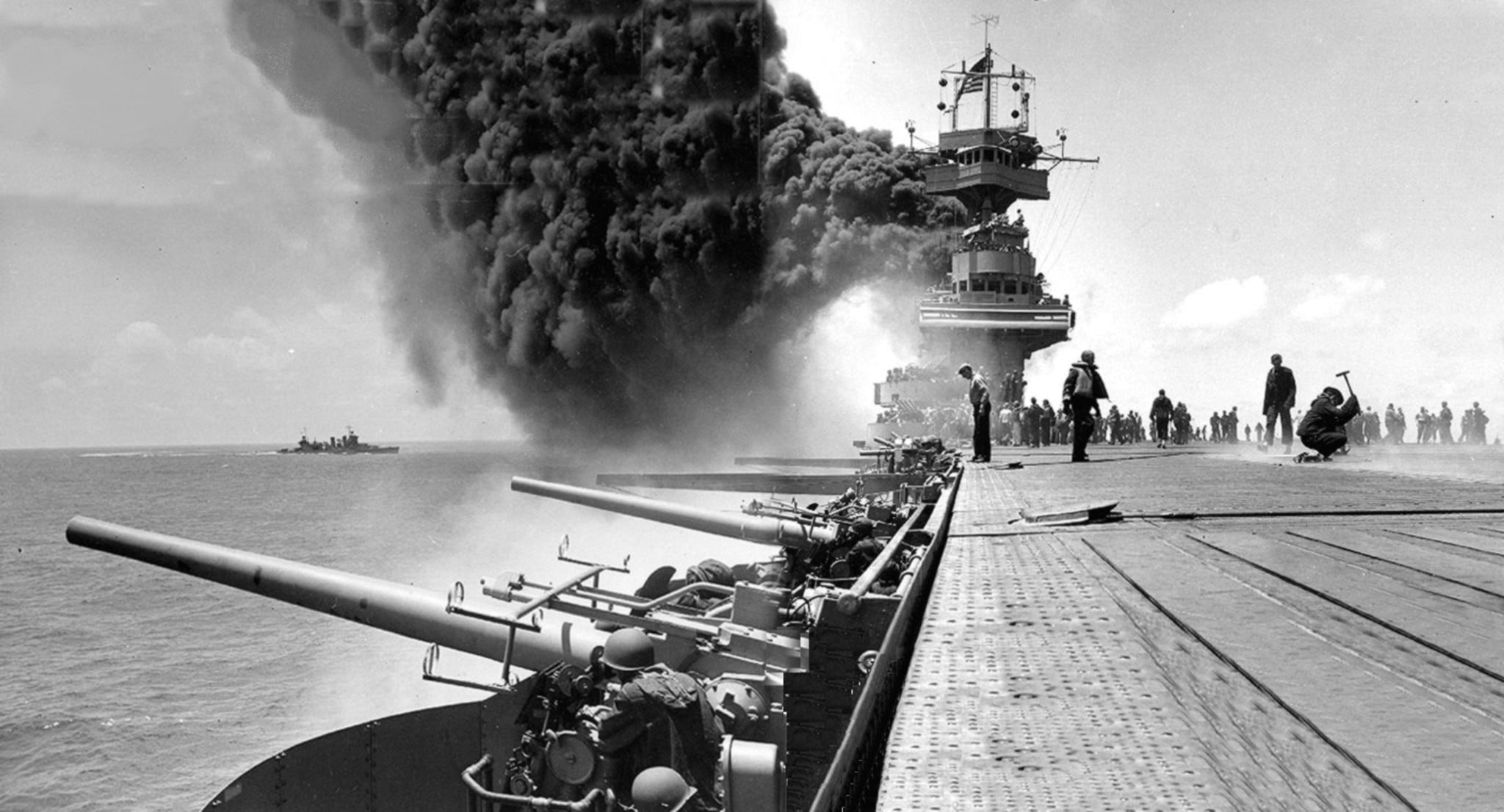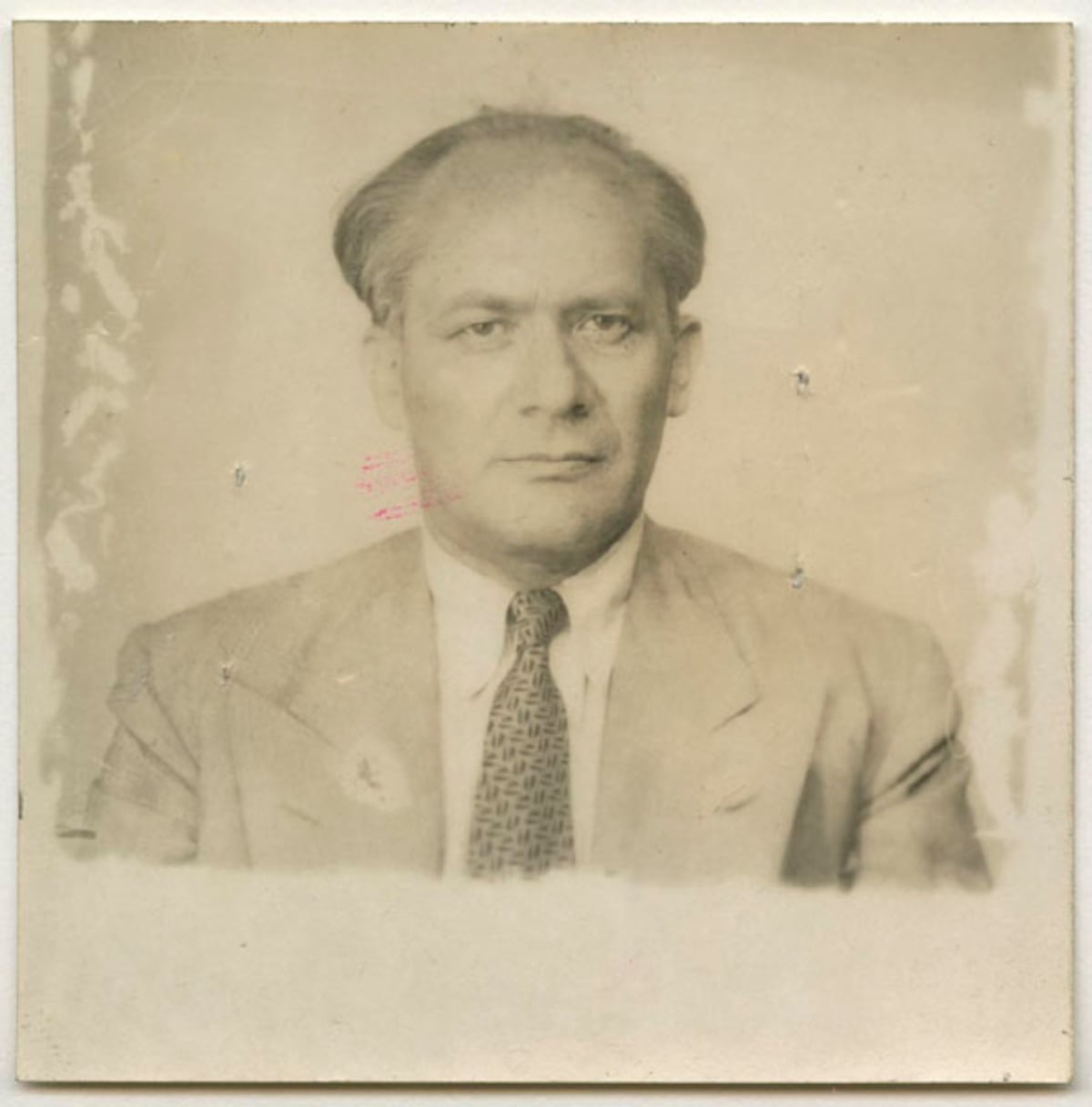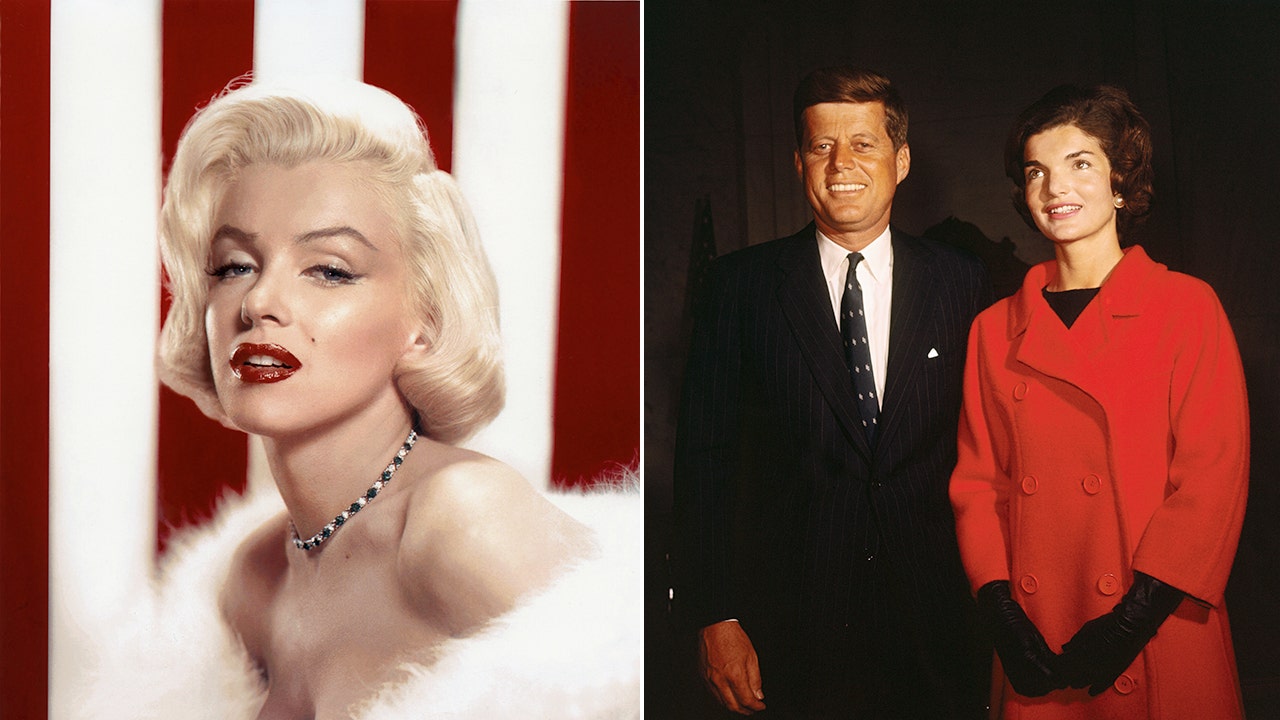Sunken USS Yorktown leaves researchers ‘flabbergasted’ in latest dive

Eighty-three years after sinking, the USS Yorktown is still revealing secrets.
During an April 19 expedition, scientists with the National Oceanic and Atmospheric Administration (NOAA) — as part of the Beyond the Blue: Papahānaumokuākea ROV and Mapping project — were using a remotely operated underwater vehicle to explore the storied U.S. Navy aircraft carrier, when they found more than they could have hoped for.
Since June 1942, the 809-foot-long carrier has been resting on the ocean floor, slipping beneath the waves after Japanese forces torpedoed the ship during the Battle of Midway.
Resting 3.1 miles beneath the surface and roughly 1,000 miles northwest of Honolulu, the Yorktown was first discovered in 1998 by Robert Ballard in coordination with the National Geographic Society and the U.S. Navy.
An initial investigation of the shipwreck was conducted that year upon its discovery. Another, led by Ocean Exploration Trust on Exploration Vessel Nautilus, was launched in 2023. The April 19 dive, however, was the first exploratory expedition of its kind — revealing a host of discoveries.
During the dive, at least three Douglas SBD Dauntless bombers were found on the ship’s hanger deck — with one plane still fully armed after 83 years, its bomb secured in its release cradle.
The other two, according to NOAA, are believed to have been part of the USS Enterprise’s bombing squadron that landed on the Yorktown after releasing their payload. During the battle, SBDs were responsible for fatally damaging all four Japanese carriers.
These Dauntless bombers bear the scars of battle, with records showing that the pair were moved to the hangar deck and set ablaze after being struck by three Japanese bombers.
The cameras, meanwhile, picked up more than just the vestiges of battle.
A hand-painted mural that reads “A Chart of the Cruises of the USS Yorktown” was found inside one of the vessel’s elevator shafts. The mural, only partially visible in historic photographs taken before the ship’s sinking, revealed itself for the first time to researchers.
The mural, which stretches 42 feet end to end and 12 feet top to bottom, was seemingly painted by a crew member to track the Yorktown’s voyage across the world.

During the live-feed of the dive, researchers were astounded by the almost perfectly preserved map.
“This is the first time we’re seeing this whole image. This is history in the making,” one researcher said as the camera turned its view onto the mural.
“That is amazing,” another noted. “I am absolutely flabbergasted by the state of preservation of this.”
While murals were occasionally painted on other ships during World War II, the Yorktown’s had seemingly been lost to history — until now.
“Its motifs showcase the pride that Yorktown’s sailors had for their ship, the global scale of Yorktown’s activities, and the strategic role that the ship played in defending the United States,” NOAA said in a news release.

Along with the aircraft and aircraft debris in Yorktown’s hangar, the mural is helping to fill gaps in the historical record of the Yorktown.
The 28-day expedition, according to NOAA, has provided “answers to existing questions and result[ed] in new mysteries for historians and scientists to puzzle out.”
One such mystery is the “surprise automobile” researchers discovered during the April 19 dive.
“Based on the flared fenders, split windshield, rag top, chrome details and spare tire, researchers have tentatively identified the vehicle as a black 1940-1941 Ford Super Deluxe ’Woody,’” the Smithsonian noted.
On its front plate, according to a statement, researchers could make out the words “SHIP SERVICE ___ NAVY.”
The presence of the car on the aircraft carrier has puzzled researchers and historians alike. Even more puzzling was the fact that crew members didn’t push the “Woody” overboard after Capt. Elliot Buckmaster, in an effort to keep the ship afloat, gave the order to jettison heavy cargo that included the likes of guns and aircraft.
For now, researchers can only surmise as to why the vehicle survived the jettison order.
Another mystery for another dive.
Claire Barrett is the Strategic Operations Editor for Sightline Media and a World War II researcher with an unparalleled affinity for Sir Winston Churchill and Michigan football.
Read the full article here









